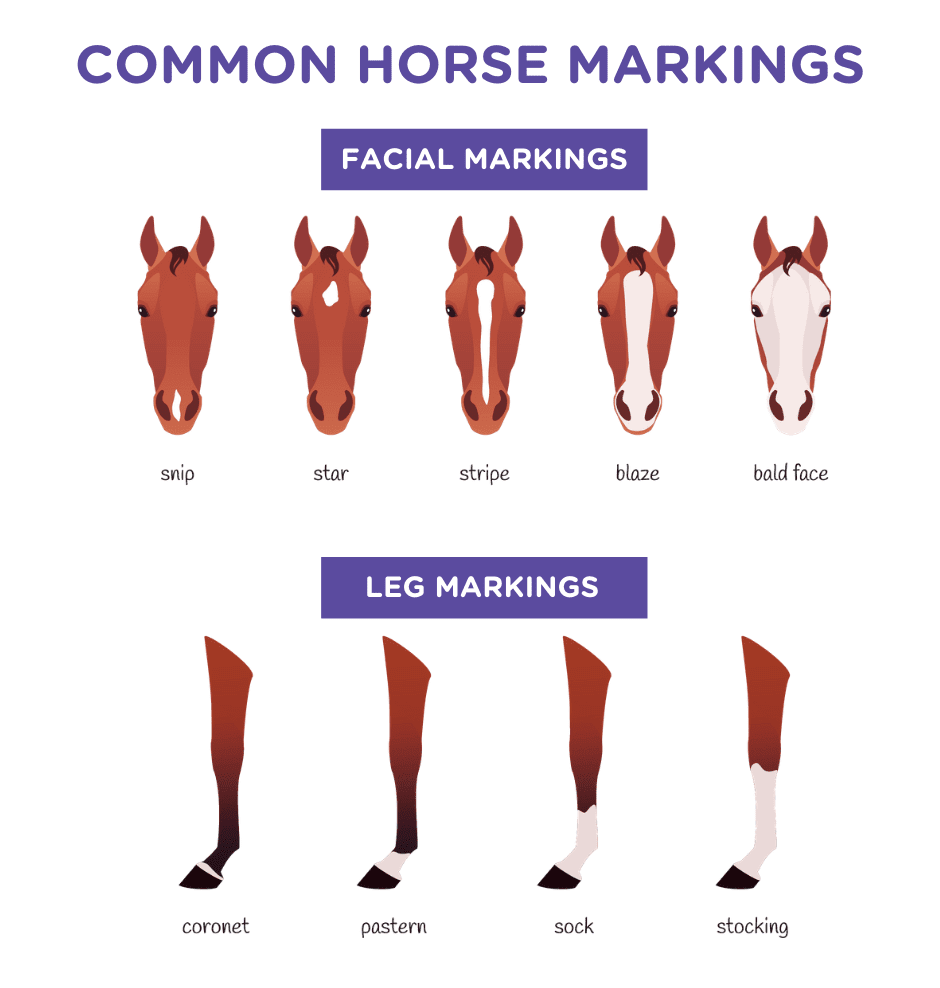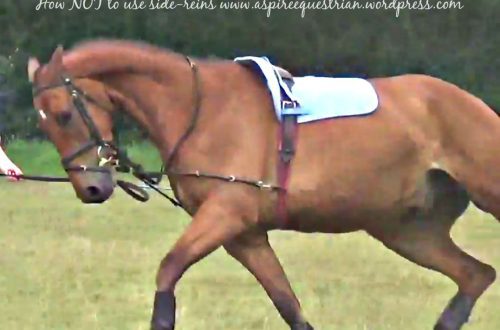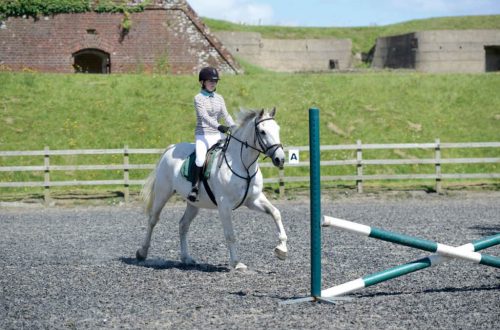
What you need to know about the behavior of horses?
What you need to know about the behavior of horses?
One of the keys to working safely with a horse is understanding its natural behavior. If you can predict when a horse will show aggression or fear of something, you will be able to react faster and better, avoid a dangerous situation or prevent it from occurring. The article below explains the fundamentals of natural horse behavior.
To begin with, I want to give ten theses about the survival of the horse in the natural environment.
1. The horse is a prey animal. Its survival in the natural environment depends on the flight instinct. The natural enemies that pose a danger to the horse are predators, so its ability to get ahead of them is crucial. To fully understand the nature of horses, we must understand the nature of their flight instinct.
2. Horses are one of the most attentive and cautious of all domestic animals. Since they are prey in nature, horses must be able to detect predators. A stimulus that goes unnoticed by humans often triggers anxiety in horses (as riders and trainers, we usually mistake this reaction for “fright” or bad behavior).
3. The horse has a very fast response time. The prey animal must immediately react to the alleged predator – only in this way can it survive.
4 Horses may be desensitized to frightening stimuli. They can quickly learn what is dangerous (lion, cougar, etc.) and what is harmless (birds, rocks, etc.), so they don’t spend their entire lives running from every object.
5. Horses forgive but don’t forget. They remember bad situations especially well! That’s why it’s important to make the horse’s first training experience a positive one.
6. Horses categorize their experience basically in one of two ways: a) something not scary, can be ignored or explored, and b) something scary, needs to be run. Therefore, when you introduce something new to the horse, you must make it so that he chooses option “A”. Again, it is important to make the entire training experience a positive one.
7. Horses are fairly easy to dominate. A horse is a herd animal, and a hierarchy is always established in herds. If done correctly, a person can easily become a leader for the horse, dominate during training, without causing him excessive fear.
8. Horses dominate by controlling the movement of their neighbors in the herd. They come under dominance when: a) we or another animal make them move when they don’t want to, and b) we or another animal prevent them from moving when they want to run (examples – use of a barrel, cord circle; in a herd – the more dominant horse chases the less dominant).
9. The body language of the horse is unique. As a highly social animal, the horse communicates its emotions and intentions to its companions through both vocal cues and body language. The person who controls the horse must be able to read the body language of the horse – only in this way will he become an effective trainer.
10. Newborn foals are neurologically mature. They are most vulnerable immediately after birth, so they must be able to recognize danger and flee if necessary.
Social structure
The herd of wild horses consists of one or two stallions, a group of mares and their foals. The leader of the herd is usually an old mare (“alpha mare”), even if there is a stallion in the herd. She retains her dominant role, although she may be physically weaker than other horses. The older mare has more experience, more contacts and has endured more threats than any other horse in the herd. The requirement for a lead horse is not strength or size; if that were the case, then humans could never dominate horses. Dominance is based not only on aggression, but also on relationships that allow one horse to know that the other horse expects obedience from them.
The task of the stallion is to be the guardian and protector of the herd, as well as to maintain reproductive viability. A stallion’s harem usually consists of 2-21 horses, up to 8 of which are mares, and the rest are their descendants. When the foals are old enough to fend for themselves, they form a herd of bachelors. Fillies either remain in their herd, or (most often) move to another, or form a new herd with a bachelor stallion.
As soon as a stallion becomes too old to maintain his status as the owner of the herd, he is replaced by a younger stallion from the bachelor herd. The average stallion lead time is about 2 years, but some can remain leaders for over 10 years.
Horses are most vulnerable when they are eating or drinking. So when a horse is submissive, it will feign eating by lowering its head, chewing with its jaw, and licking its lips.
Dominance is characterized by the ability of one horse to force another to move against its will. The horse will push the other or force it to run away without contact. If the horse does not move or reacts aggressively, the dominant horse will get into a fight to either confirm or challenge its status.
Feelings
The main hazard detector is vision horses. Despite poor color vision, horses can distinguish blues and reds from grays. However, horses have more trouble distinguishing yellow and green from grey. Horses also have poor depth perception when using only one eye. They can’t tell a trailer from an endless tunnel, or a puddle from a bottomless lagoon. Their perception is improved by about 5 times when using both eyes (binocular vision). They can instantly change focus from near to far objects. This is why horses move their heads to different positions to see near and far objects.
Horses have developed an acute ability to detect movement. This is why horses are more skittish on windy days; objects that are usually stationary are now moving and are perceived by them as a potential threat.
Horses see well at night, but their sensitivity is less than that of cats.
The mechanics of a horse’s vision are different from ours. They can see almost panoramic, with a small blind spot in front, in front of the muzzle, and behind, behind the tail:
Never approach the horse silently from front to back. If you startle a horse with a sudden appearance from a blind spot, he may use one of his defense mechanisms – hit you or run away.
A horse can see two things at once, one with each eye. This is possible due to the fact that each part of her brain can work separately. Like humans, horses have a dominant side (right or left); however, unlike humans, horses need to examine an object twice: on the right side and on the left.
The expression of the horse’s eyes is often considered a good reflection of her mental state (for example, wide-open eyes, when a white body is visible, indicate fear, half-closed eyes indicate drowsiness and relaxation, etc.).
Hearing horses are much sharper than ours. Horses use their hearing to detect sounds, determine the location of the object making the sound, and obtain sensory information that allows the horse to recognize the nature of the source of the sound. Horses can hear low to very high frequencies ranging from 14 Hz to 25 kHz (the human hearing range is 20 Hz to 20 kHz). Horses’ ears can turn 180 degrees using 10 different muscles (the human ear can only move thanks to three) and is able to highlight a specific area that needs to be heard. This allows the horse to navigate through the sounds to determine what is making the noise.
Horses are extremely sensitive to touch or touch. Their entire body is as sensitive as our fingertips. They can feel both a fly landing on one hair, and any movement of the rider.
Body Signals
Horses are very good at letting us know how they feel; the only problem is that most people don’t understand their “language”. We will give you some tips. So:
If tail horses:
Raised high – she is alert or excited.
Lowered low is a sign of exhaustion, fear, pain or submission.
On top, almost on the back (this is what most foals do) – the mood is playful or the horse is very anxious.
The horse tails – she is irritated.
Let’s move on to legs. If a:
The horse is digging – it is upset.
· One front leg is raised – the horse can show a gentle threat (sometimes this can be a normal position during meals).
The leg is raised – this is often a more pronounced threat.
The horse stomps – this indicates a mild threat or protest (perhaps the horse is trying to get rid of insects or flies biting its legs).
facial expression:
· Sucking movement – this is how foals often show their submission to older horses. They open their mouths, pull the corners of their lips back, then open and close their jaws.
· Jaws open, teeth exposed – the horse is showing aggression or ready to attack.
·Flehmen. This reflex is triggered by an intense or unusual smell. It is usually shown by stallions when they feel a mare in the hunt. They suck in air through their noses and lift their upper lip up and back.
Widened nostrils – usually a sign that the horse is excited or alert.
The whites of the eyes are visible – usually means that the horse is angry or frightened. (Protein is seen in Appaloosa horses, which is a normal characteristic.)
Ears horses – a unique indicator:
· Neutral position – the ears are directed freely upwards, the auricles are directed forward or outward.
The horse’s ears are turned forward, directed upwards. This means that something has caught the horse’s attention.
The ears are set apart like the wings of an airplane. This usually means that the horse is tired or depressed.
Dropped ears (ears hanging down and to the side) usually indicate fatigue or pain.
Ears turned back (ears pointing back towards the rider) – usually means attentiveness to the rider, the horse listens to the command.
Blocked ears – the horse is angry and aggressive.
Communications
Horses have many ways of vocal and non-vocal communication.
Voice includes yelp or a cry that usually indicates a threat to another horse.
Gugukanye – low and quiet sounds. The stallion makes such sounds while caring for the mare; mare and foal googling to each other; a horse hoots when it knows it will be mealtime soon. High-pitched neighs are sounds that can travel a long distance.
Horse neighsso other horses know where she is when she tries to find the herd. Horses also use neighing to communicate with each other even when they are out of sight of each other.
Snore, a loud snort is a strong, rapid expulsion of air through the nose, resulting in a loud sound, which is usually an alarm signal and is used by horses to warn others of danger.
Quiet spitting A more passive, shorter and lower version of snoring, usually the result of an object or dust getting into the horse’s nose.
In the herd, along with signals of aggression, there are also signals of friendship. Mares and foals push each other while feeding, horses scratch each other’s manes and withers.
Vices
Vices are negative actions that occur for a variety of reasons, including stress, boredom, fear, excess energy, and nervousness. Horses in their natural environment graze for 12-16 hours a day. When kept in a stall, we do not allow them to do what they do in nature – move around the pasture, communicate with other horses.
The lack of natural stimuli causes the horse to invent its own stimuli. Once these habits are established, they become difficult to eliminate.
bite – the horse rests his teeth on a fixed surface (for example, the edge of the stall door, feeder, fence), bends his neck and sucks in air, making a characteristic sound. This results in the release of endorphins, which relieves the horse of tension. The bite becomes a habit. Even when the tension or the unpleasant situation passes, the horse continues to bite at times. Some horses even prefer a bite to a meal! Biting can lead to weight loss, poor performance, colic, and excessive tooth wear.
Duck – the horse stands at the door of the stall and rhythmically shifts its weight from one front leg to the other, waving its head at the same time. This can be caused by boredom or excess energy and can lead to weight loss, poor performance, and weakened tendons.
Bumping on the walls of the stall, wandering around the stall, digging, and also trying to bite the doors of the stall are also vices caused by boredom from being indoors. To reduce the frequency of this behavior, you can try adding another meal, putting toys in the stall, giving the horse more roughage, and starting to take him to the levada.
Horses gnaw on the wooden elements of the stall, eat bedding (not straw), their excrement, and also satiate themselves. Such vices are caused by a lack of the required amount of exercise or boredom. They can also be caused by malnutrition. Add more roughage to the horse’s diet, place salt and minerals in the stall. This may reduce the incidence of the defect.
Cary А. Williams, Ph.D., Extension Specialist in Equine Management, Rutgers University (a source); translation Valeria Smirnova.





